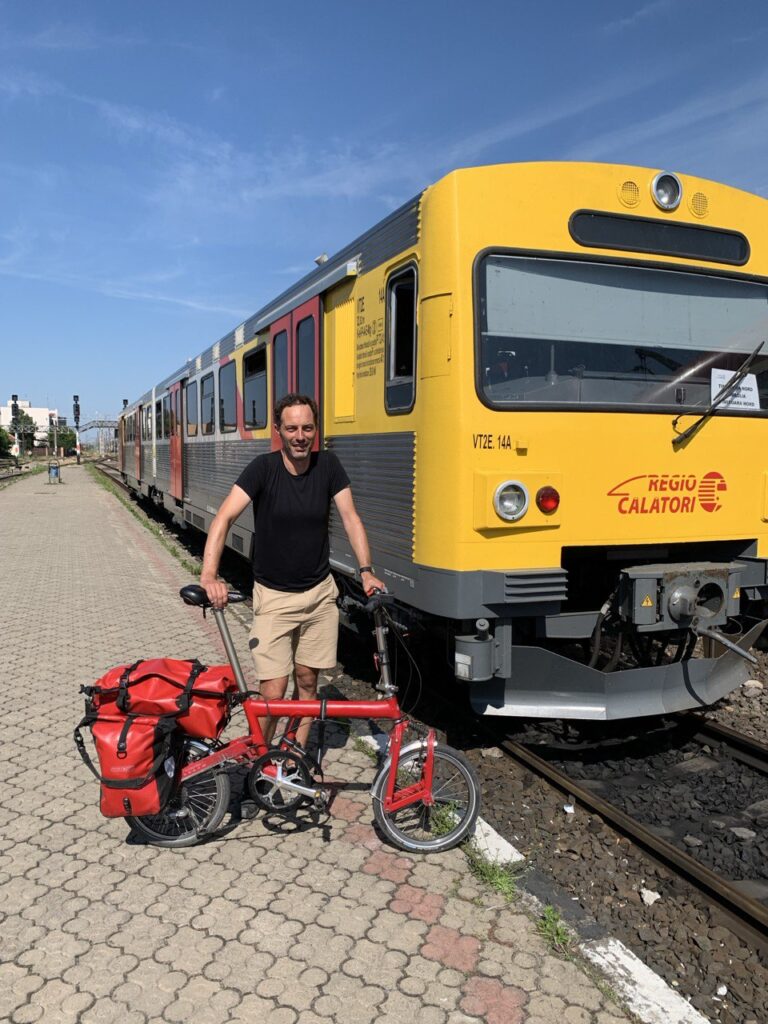Back in 2015, the then chair of the Transport Committee in the European Parliament, Michael Cramer examined 15 so-called “missing links” – places where trains used to cross borders within the European Union, but no longer do.
7 years on I (Jon Worth) wondered: what has come of those missing cross border rail links Cramer had proposed to fix when he was a MEP?
I could not have imagined the scant little progress. Since Cramer started working on the issue, only one of the fifteen missing links he examined has been re-activated. Perhaps more worrisome was that at least 5 (and possibly as many as 10) of the routes he examined have no prospect of reactivation in the short to medium term.
So – I started to ask myself – what could I do about this? And more widely, as cross border rail in Europe is in a sorry state, could I expand the scope of Cramer’s work – and using social media in particular highlight these issues to a wider public?
The #CrossBorderRail project in 2022 was my first effort to do so.
Cramer’s work focused on places where cross border tracks are missing. But that is not the only problem.
In some places tracks exist, but they are in a poor state or there are technical problems on the other side of the border.
In other places the infrastructure is fine, but passenger trains do not run.
And in some places where trains do run, passengers cannot find information about those services or book tickets for them. In other places the problem is instead with dreadful timetables.
As if that were not enough, the problems have been compounded by the impact of COVID – routes cancelled ostensibly as a result of the pandemic and not re-instated.
I have a comparatively good knowledge of these issues, but there are plenty of corners of the EU that I have never visited and seen what might or might not work with my own eyes. A type of comparative analysis is what I have long advocated the European Commission should undertake, but as the Commission is not doing this work, I thought I better set about doing something. 2021’s Connecting Europe Express should also have addressed some of these issues, but largely did not.
 So the idea was born to plan a huge rail and bike journey that crossed every internal border inside the European Union (and EFTA countries) that you can cross by train. And en route stop for at least long enough to organise a meeting in the political capital of each country to discuss these issues with local activists, and – pandemic permitting – do that trip in a comparatively compressed period in the summer of 2022.
So the idea was born to plan a huge rail and bike journey that crossed every internal border inside the European Union (and EFTA countries) that you can cross by train. And en route stop for at least long enough to organise a meeting in the political capital of each country to discuss these issues with local activists, and – pandemic permitting – do that trip in a comparatively compressed period in the summer of 2022.
This trip shone the light on all of these issues, telling the story of Europe’s missing and poor quality cross border trains – and do that from the ground, telling the stories from the trains and regions where these problems occur.
At the end of the trip I drew political conclusions and make recommendations to both EU and national level political decision makers.
In May 2023 I did a smaller follow-up project – to visit all of Germany’s international railway borders. You can find details of this project here. In Autumn 2023 I went to Ireland, Spain, and Central Europe again, and in 2024 I aim expanded #CrossBorderRail to South East Europe.